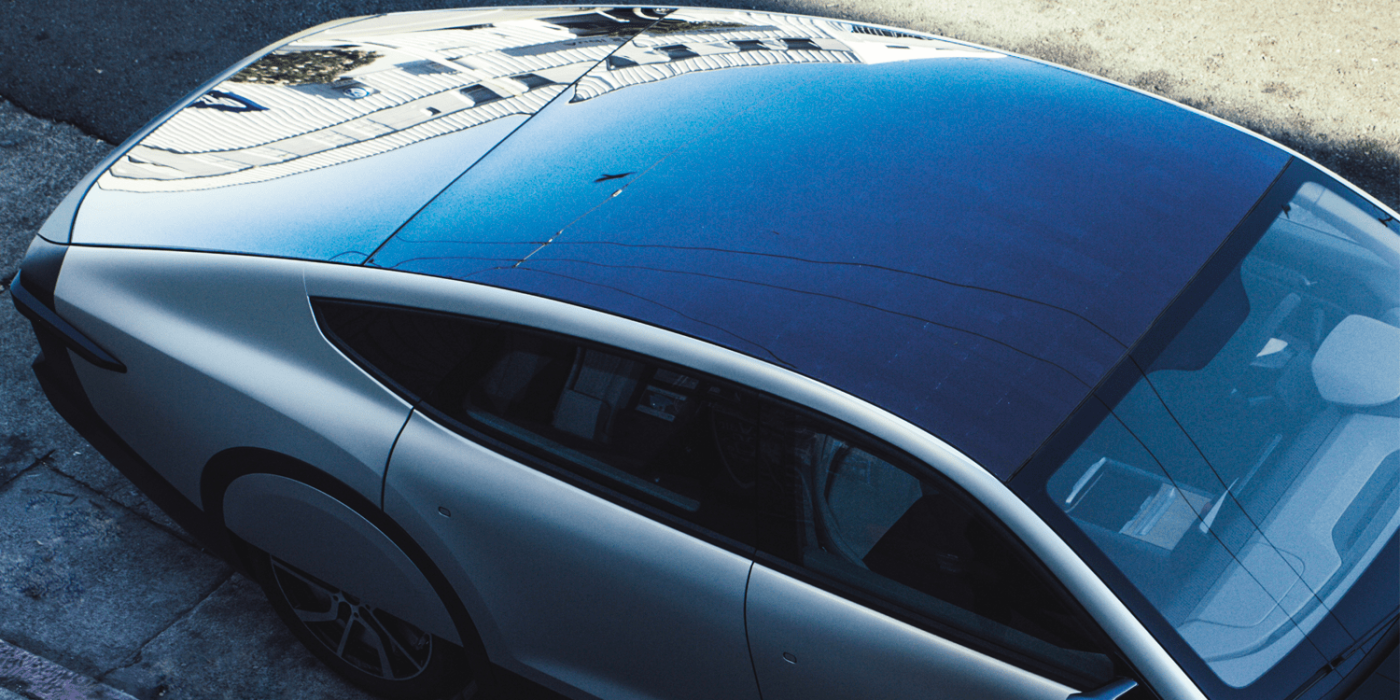Lightyear & DSM to develop solar roofs for vehicles
Lightyear, the startup company that emerged from the solar team at the Technical University of Eindhoven, presented its long-distance solar car Lightyear One last year. Now the startup wants to push the development of solar roofs for electric vehicles with the Dutch company DSM.
The cooperation is to extend far beyond the Lightyear One. The agreement now signed provides for both partners to push the commercialization of solar roofs for electric vehicles. The partnership is specifically focussed integrating solar roofs into a wide range of electrically powered vehicles such as cars, vans and buses. Lightyear and DSM say that they will first evaluate markets and launch pilot projects with customers from the automotive and public transport sectors.
For this purpose, the company will be using the solar roof developed by Lightyear, which was first presented in 2019 in the Model One. Here solar cells are integrated into a surface area of five square meters into the roof and the front hood of the car. The end result is supposed to be so stable that an “adult man can walk on them without causing dents”.
DSM supplies a conductive backsheet for the solar roofs, which according to Lightyear is an “integral part” of the solar roof. This allows the solar cell connections to be placed on the back, “so that every available centimetre on the front of the module is available for capturing sunlight”. This also helps to minimise electrical losses.
The Lightyear One is expected to reach a WLTP range of 725 kilometres when it is launched in 2021 – of course, the vehicle is not yet homologated at this point. According to the developers, the solar roof should provide enough energy to cover an average of 70-90 per cent of the annual mileage. However, Lightyear is assuming short car journeys, which average about 40 kilometres per day. On sunny days, the solar cells in the Lightyear One are expected to generate electricity for up to 33 kilometres – so under optimal conditions, the calculation works out. On cloudy days, in winter or simply when the car is parked in a garage, the solar power share will decrease considerably.
Electric buses or electric trucks with their larger batteries can use considerably more solar cells. However, their daily mileage is usually much higher. Research is also being conducted in Germany on solar modules in electric commercial vehicles. In the ‘Lade PV’ charging project, four industrial companies and two Fraunhofer Institutes want to demonstrate the marketability of photovoltaic applications in freight transport. “We not only want to develop the technology but also show that trucks can cover over five per cent of their propulsion energy with solar energy,” says project leader Christoph Kutter. “4,000 to 6,000 kilometres additional range per year is mathematically possible.”
“By stepping up our collaboration with Lightyear we are creating an entirely new market for ‘lossless’ high power back-contact technology – with the potential to change the face of clean mobility and make a big impact on climate change,” says Pascal de Sain, Vice President of DSM Advanced Solar. Martijn Lammers, Lightyear’s strategy chief and co-founder, adds: “By scaling up the accessibility of our solar technology through our partnership with DSM, we can accelerate the mass adoption of electric vehicles by making them sun-powered.”
Koninklijke DSM is a chemical company based in Heerlen. Originally founded as a mining company (DSM stands for Dutch State Mines), the company produces industrial chemicals, pharmaceuticals and food supplements, among other things, and has also been working in the field of sustainable living for several years.
Source: Info via email





0 Comments